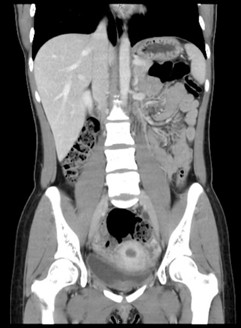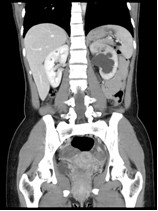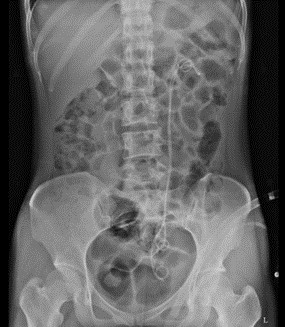子宮內膜異位侵犯輸尿管案例分享
劉瑞文、江怡德
衛生福利部立雙和醫院 泌尿科
Case sharing of ureteral endometriosis
Liu Jui Wen, Chiang Yi Te
Department of Urology, Shuang Ho hospital, Taipei Medical University, Taipei, Taiwan
Introduction: Endometriosis of urological tract is rare condition. We are sharing one case about urinary tract endometriosis evaluation and management.
Case report: This 30 years old female patient denied chronic or systemic disease. She was incidentally found about left severe hydronephrosis during health examination. So she came to our out-patient department for help. There was no dysuria, hematuria. Physical examination showed no obvious flank knocking pain. CT scan showed lower third ureteral stricture or suspicious soft tissue lesion at the left adnexa, ruled out endometriosis. Gynecologist told that urinary tract evaluation has been done first. Ureteroscopic examination and biopsy of lower ureteral tumor were done. Pathological report showed endometriosis with endometrial gland. Double J catheter function was poor. So laparoscopic left neoureterocystostomy was done and follow up echo showed improving hydronephrosis condition. However, hydronephrosis was recurrent about 1 month after double J catheter removal. Cystoscopy showed anastomosis stricture with polyps like lesion around it. Further operation as antegrade flexible ureteroscopy and anastomosis stricture incision under endoscopic combined intrarenal surgery position was done. We used rigid URS ant bladder site and antegrade flexible URS at ureteral site, turn down brightness of rigid URS. Then Thallium laser ablation was done by rigid URS according to flexible URS site. 2 Double J catheter was inserted. Out-patient department follow up showed no hydronpehrosis condition. Her clinical condition and renal function were stable.
 |
 |
|
Lower third ureteral lesion
|
Left severe hydronephrosis
|
 |
|
|
Final KUB after antegrade flexible URS anastomosis stricture incision
|
|
Discussion: Endometriosis is traditionally classified as one of three main forms: ovarian endometriosis, superficial peritoneal endometriosis, and deep infiltrating endometriosis. Urinary tract endometriosis occurs 1 % women with endometriosis and deep infiltrating endometriosis is common type form. Pathology showed typical endometrial gland and stromal component. Urinary tract endometriosis usually 70-85% bladder invasion and 9-23% ureteral invasion. Clinical symptom is frequency, hematuria, dysuria, bladder pain. These symptoms may be worsen during menstruation. Initial evaluation is gynecological history taking, vaginal examination, sonography, image study as MRI or CT and cystoscopy. Medical treatment is including combined hormonal contraceptives and progestogens, GnRH-a and aromatase inhibitor. Surgical treatment is including treansurethral resection, partial cystectomy, neoureterocystostomy.
附件: